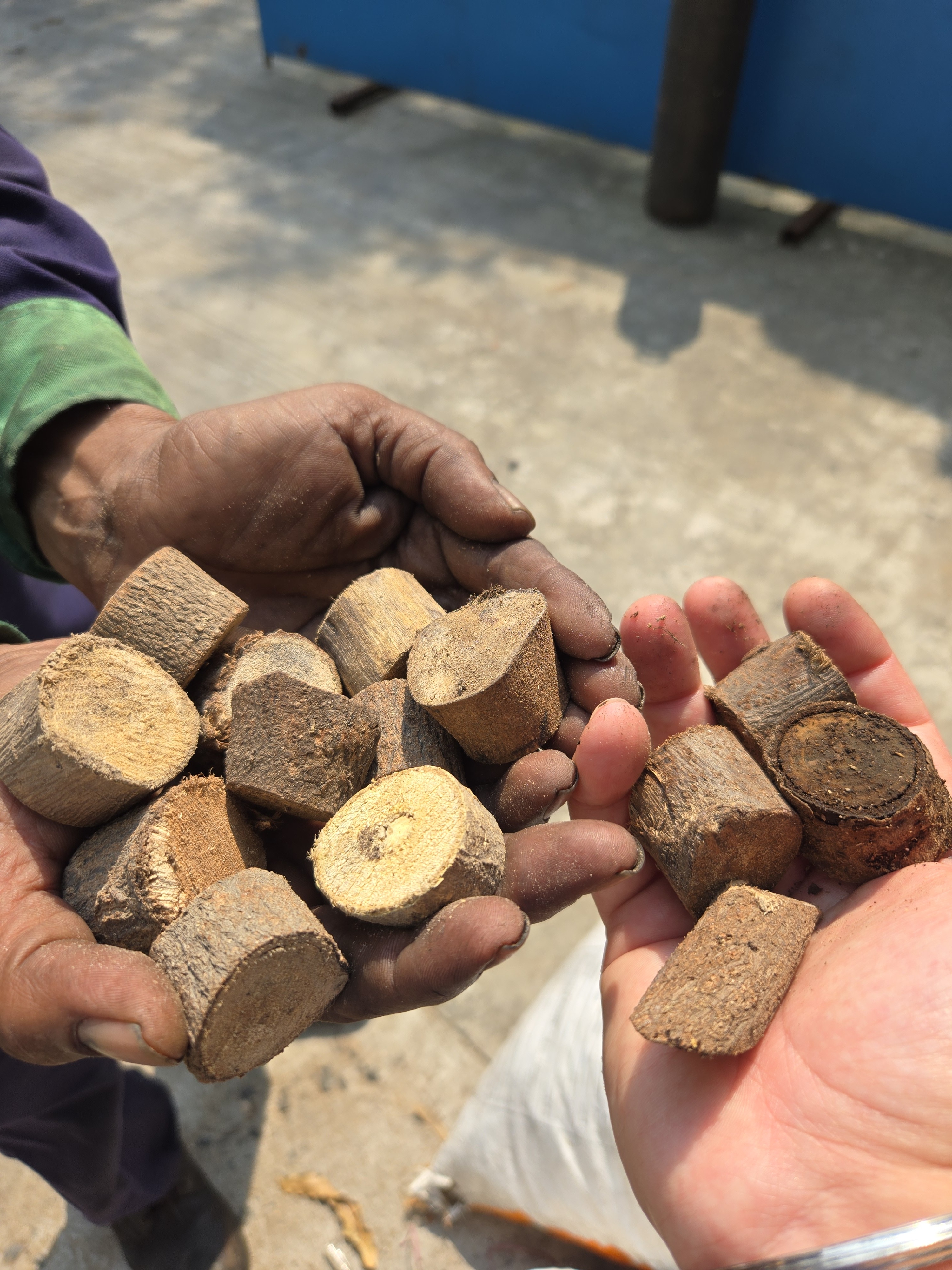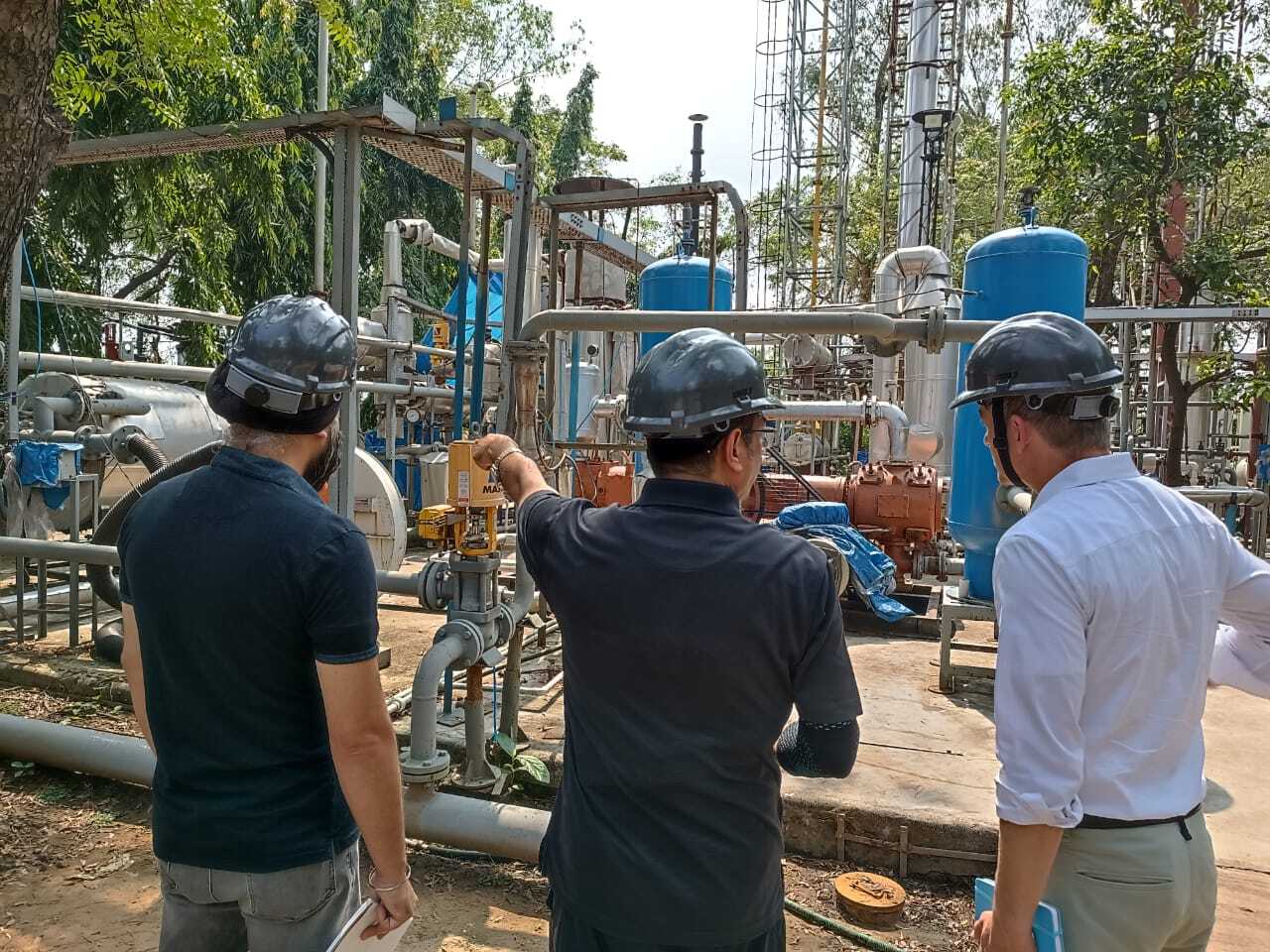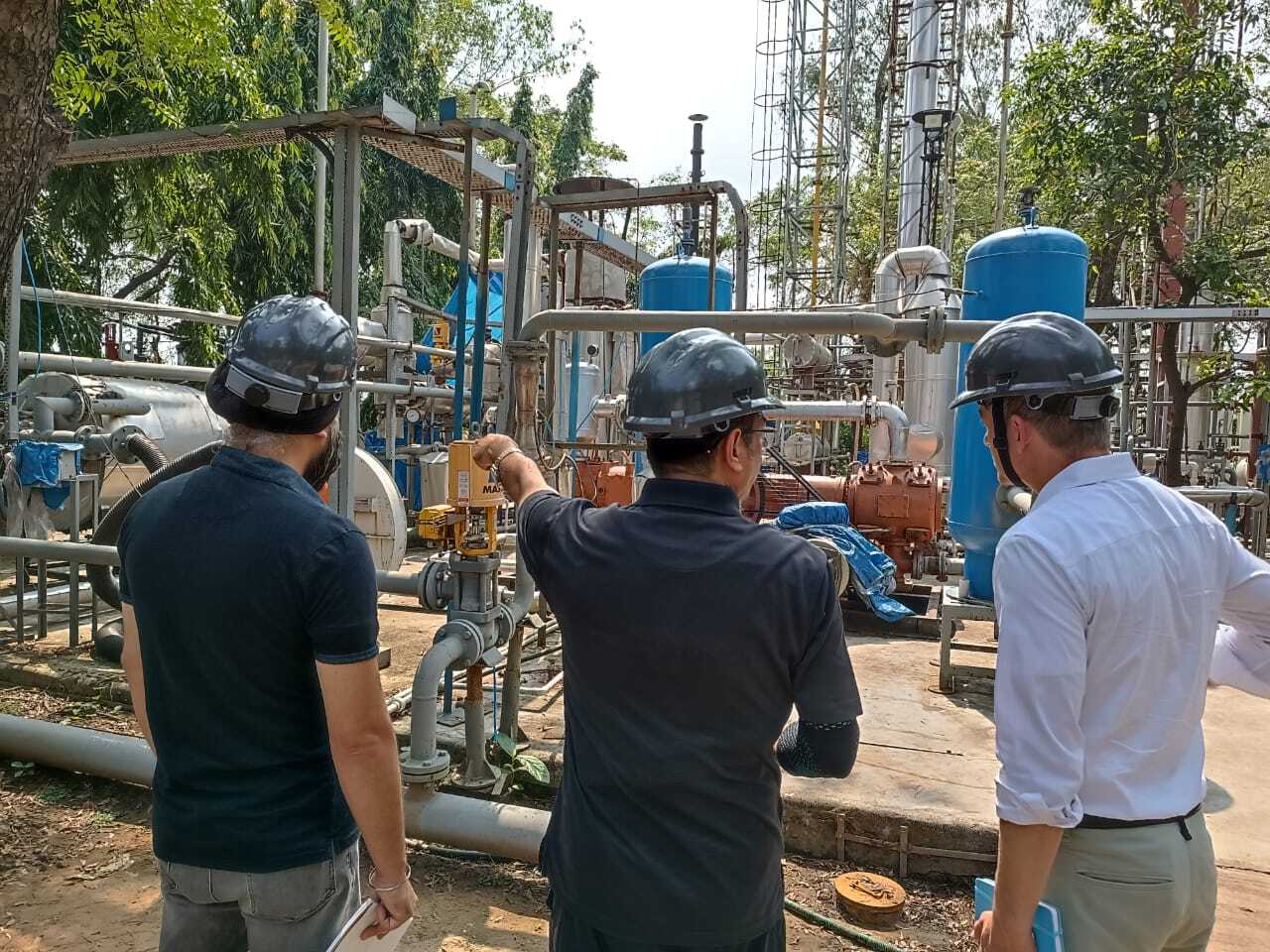A New Way Forward: Improving the Economics of Gasification
Shielding our eyes from the sun in Western India, we look up to the operator on a platform atop a black metal column two stories high. From a woven sack, the man pours wood chips into a funnel, feeding the column which radiates heat on an already warm day. At the bottom, hot, black biochar piles on a rotating grate. At the far end of a maze of pipes, gas burns into a flare. “It takes several hours for the wood to pass through the whole system,” he states, showing us a handful of the wood he just poured. The operator is demonstrating a gasifier made by Ankur Scientific, one of the largest manufacturers of gasifiers in the world. The Carbon Containment Lab’s Associate Director, Puneet Chhabra, visited Ankur Scientific’s facility in Vadodara, India in October 2024 to learn more about the gasification of woody biomass and its potential to produce clean bioenergy, a critical–and at times controversial–energy source.
···
Bioenergy refers to energy, heat, or fuel derived from recently living biological material. The gasifier we’re standing below is just one type of technology amongst many that can be used to create it. Until now, commercial-scale bioenergy from gasification has struggled to economically compete with natural gas and other renewable energy sources when viewed for electricity production. At the Carbon Containment Lab (CC Lab), our initial analyses and research indicate that the economics of gasification can be improved by incorporating the marketable value of all of its outputs, including hydrogen and biochar as well as federal tax credits (like 45V for green hydrogen). By further integrating carbon storage of the biochar and sustainably sourced feedstocks, bioenergy production from gasification has the potential to be both profitable and carbon negative.

Gasification occurs when dried organic material is heated in an oxygen-starved environment to temperatures exceeding 700°C. The resulting volatilization and reaction of organic compounds with oxygen and steam produces a mixture of carbon monoxide, carbon dioxide, hydrogen and methane called “syngas.” The name stems from its potential to be processed further; purification of syngas can yield hydrogen while Fischer-Tropsch synthesis produces heavier fuels.
Gasification has been proven out over time; it dates back to the 1800s when English cities used coal to create syngas for factories and street lamps. The process has fluctuated in use, depending on oil prices and production needs, with a peak during World War II in Germany. Facing a coal surplus and oil shortage, Germany gasified coal into syngas and used Fischer-Tropsch synthesis to produce diesel fuel. In its modern incarnation, gasification has been adapted to process waste biomass instead of coal.
Back in Ankur Scientific’s analytical laboratory, rows and rows of successfully tested feedstocks, including wood, agricultural residue, and municipal waste, are proudly displayed in labeled jars. Of particular interest to the CC Lab is the potential gasification of waste wood from forest thinning used to mitigate wildfire risk. Fire prevention activities in U.S. forests could generate approximately 1.2 billion tons of low-value wood by 2032. If this wood is left to decompose or burn, over 2 billion tons of carbon dioxide equivalent would be released into the atmosphere.[1] Finding technologies that incentivize productive use of this material is vital and gasification could play a role.
Although gasifier geometries and designs vary based on feedstock and output requirements, the fundamental process remains consistent. Post-processing involves chemical procedures to separate and purify gases or modify the overall composition to create the necessary components for heavier fuels. Waste "tail gas" with excess heat can be recycled within the system to dry incoming biomass or generate electricity for auxiliary systems.
In addition to syngas, a useful byproduct of gasification is biochar. Predominantly elemental black carbon, biochar is essentially charcoal that is not bound for further combustion. It is porous with a high surface area, making it an excellent adsorbent for pollutants and nutrients. It has also been shown to improve soil fertility and water retention.[2] Importantly to us, it is highly resistant to decomposition, making it an effective carbon store and thus a prominent way to generate high-quality carbon removal credits.[3]
So can this technology be carbon-negative? The CC Lab is conducting Life Cycle Assessments (LCA) to evaluate the carbon impact of potential feedstocks and to compare the carbon intensity of forest thinning to gasification. By modeling the material flows, LCAs can determine the environmental effects of a given process, especially the greenhouse gas emissions “embedded” in the outputs. We are determining whether woody biomass generated from forest thinning can serve as a cost-effective and carbon-negative bioenergy source. The economics become even more attractive if gasification can take advantage of renewable tax credits in addition to revenues from product sales and carbon removal credits.[4]
···
Peering into an open side port of a second gasifier, we spy the burning glow of pyrolysis and combustion taking place. Our hosts note that interest has grown from Asian and European private and government entities interested in turning agricultural residues and landfill waste into electrical power. Could the same technology, not yet proven successful in the U.S., be deployed across the fire-prone American West? As part of a system, we think it potentially could. But partners are needed to advance this technological solution, and a pilot could help demonstrate and de-risk it. If you are interested in woody biomass gasification or are pursuing a pilot plant, reach out at info@cclab.org.

